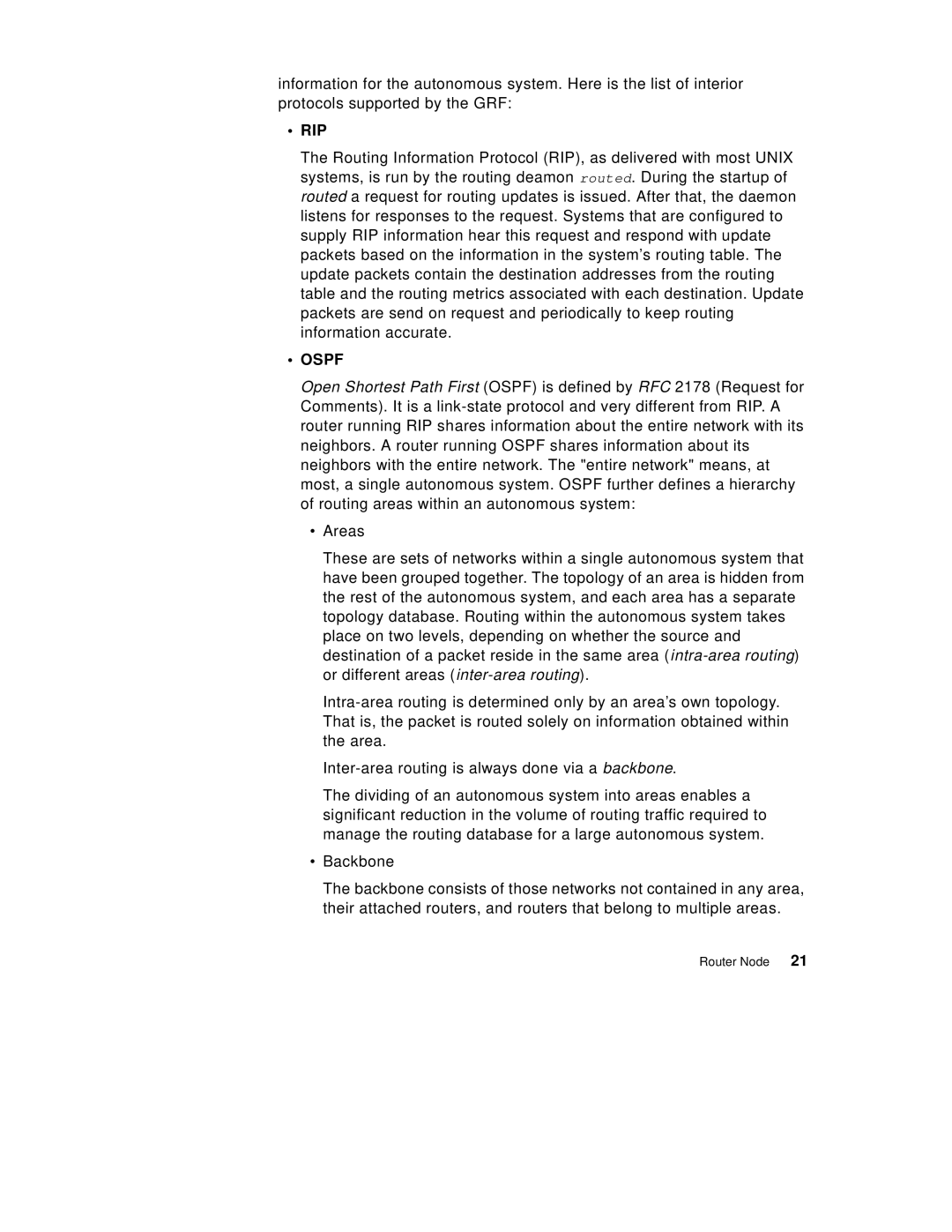information for the autonomous system. Here is the list of interior protocols supported by the GRF:
•RIP
The Routing Information Protocol (RIP), as delivered with most UNIX systems, is run by the routing deamon routed. During the startup of routed a request for routing updates is issued. After that, the daemon listens for responses to the request. Systems that are configured to supply RIP information hear this request and respond with update packets based on the information in the system’s routing table. The update packets contain the destination addresses from the routing table and the routing metrics associated with each destination. Update packets are send on request and periodically to keep routing information accurate.
•OSPF
Open Shortest Path First (OSPF) is defined by RFC 2178 (Request for Comments). It is a
•Areas
These are sets of networks within a single autonomous system that have been grouped together. The topology of an area is hidden from the rest of the autonomous system, and each area has a separate topology database. Routing within the autonomous system takes place on two levels, depending on whether the source and destination of a packet reside in the same area
The dividing of an autonomous system into areas enables a significant reduction in the volume of routing traffic required to manage the routing database for a large autonomous system.
•Backbone
The backbone consists of those networks not contained in any area, their attached routers, and routers that belong to multiple areas.
Router Node 21
